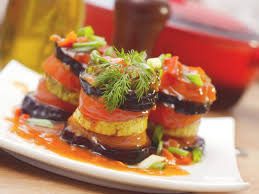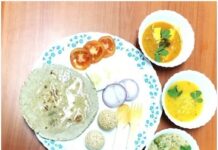 French cuisine sounds fancy, conjuring up images of anniversary date nights, expense-account feasts, and once-in-a-lifetime trips to Paris. But with the right ingredients, techniques, and dining mentality, you can create amazing French meals on an average weeknight in your very own kitchen.French cooking may seem sophisticated, but it’s not rocket science. “It’s ultimately about creating a harmonious dish that elevates the quality of the main ingredient. For example, different regions in France may treat chicken differently—Burgundy makes coq au vin, the Basque region makes Chicken Basque [stewed chicken and vegetables with earthy spices]—but it’s still all about the chicken,” explains Eric Ripert, chef and co-owner of Le Bernardin in New York City and judge on Top Chef. “There’s a lot of tradition involved in all of it.”“It’s about building flavors,” says Dorie Greenspan (DorieGreenspan.com), author of Around My French Table ($40, amazon.com). “The French do that so well; they can really layer flavors.” In the soup-, stew-, and sauce-heavy cuisine, dishes often start with a base of mirepoix, a combination of diced celery, onions, carrots, and garlic. And it’s no secret that French chefs cook with wine every now and again—but it’s never just sloshed into a dish. It’s often added into a hot pan to reduce so that the concentrated flavor of the wine comes through. When browned meats are added, the layers of flavor intensify. Finishing the dish with fresh herbs adds that final punch.But the ability to whip up cassoulet, steak au poivre, and bouillabaisse without breaking a sweat comes from mastering the basic techniques. “What makes French techniques universal is that they are based on logic,” Ripert says. “Sautéing, roasting, braising, poaching, broiling—they all have a reason to be used. For example, a beef stew would be braised because otherwise that cut of meat would be tough.”However, to truly understand the mentality of French dining, you have to look beyond the ingredients and the techniques. Think of it as a way of life. “It’s really the style of eating, how meals are planned and a way to sit around the French table,” Greenspan explains. The typical meal includes three courses—a simple starter (soup is a popular option), a main dish (this could be as basic as a quick chicken recipe), and then cheese and fruit for dessert. “It’s meant to unfold, so it’s a really relaxing moment at the end of the day. It’s about the pleasure of sitting down, enjoying family, company, and food,” she says. “So put your elbows on the table and let the meal flow.”
French cuisine sounds fancy, conjuring up images of anniversary date nights, expense-account feasts, and once-in-a-lifetime trips to Paris. But with the right ingredients, techniques, and dining mentality, you can create amazing French meals on an average weeknight in your very own kitchen.French cooking may seem sophisticated, but it’s not rocket science. “It’s ultimately about creating a harmonious dish that elevates the quality of the main ingredient. For example, different regions in France may treat chicken differently—Burgundy makes coq au vin, the Basque region makes Chicken Basque [stewed chicken and vegetables with earthy spices]—but it’s still all about the chicken,” explains Eric Ripert, chef and co-owner of Le Bernardin in New York City and judge on Top Chef. “There’s a lot of tradition involved in all of it.”“It’s about building flavors,” says Dorie Greenspan (DorieGreenspan.com), author of Around My French Table ($40, amazon.com). “The French do that so well; they can really layer flavors.” In the soup-, stew-, and sauce-heavy cuisine, dishes often start with a base of mirepoix, a combination of diced celery, onions, carrots, and garlic. And it’s no secret that French chefs cook with wine every now and again—but it’s never just sloshed into a dish. It’s often added into a hot pan to reduce so that the concentrated flavor of the wine comes through. When browned meats are added, the layers of flavor intensify. Finishing the dish with fresh herbs adds that final punch.But the ability to whip up cassoulet, steak au poivre, and bouillabaisse without breaking a sweat comes from mastering the basic techniques. “What makes French techniques universal is that they are based on logic,” Ripert says. “Sautéing, roasting, braising, poaching, broiling—they all have a reason to be used. For example, a beef stew would be braised because otherwise that cut of meat would be tough.”However, to truly understand the mentality of French dining, you have to look beyond the ingredients and the techniques. Think of it as a way of life. “It’s really the style of eating, how meals are planned and a way to sit around the French table,” Greenspan explains. The typical meal includes three courses—a simple starter (soup is a popular option), a main dish (this could be as basic as a quick chicken recipe), and then cheese and fruit for dessert. “It’s meant to unfold, so it’s a really relaxing moment at the end of the day. It’s about the pleasure of sitting down, enjoying family, company, and food,” she says. “So put your elbows on the table and let the meal flow.”
Happily, you can introduce that lovely way of life into your kitchen at any time. Consider getting started with a niçoise salad, which is an arranged mixed salad topped with tuna and anchovies. “You’ll learn how to make vinaigrette and cook vegetables in a different way to toss the salad and present it,” Ripert says. Once you’ve mastered the salad, he suggests roasting a chicken, which is one of the simplest preparations around. Of course, the challenge is to make the finished chicken boast both crispy skin and a tender, juicy inside. Ripert recommends roasting in a 400° F oven; you’ll know the bird is done when you tilt it with a fork and the juice that runs out is translucent. Be sure to keep it under the broiler until the skin is perfectly crispy.Or start with classic onion soup, as Greenspan suggests: “All it takes is the patience to brown the onions. Just slowly caramelize them and let them get really dark so the flavor gets deep. It’s super easy.” Only have 10 minutes to get dinner on the table? Try steaming mussels with some onions, garlic, and white wine. “They just look like a party when they’re served in the pot they’re cooked in,” says Greenspan. Searching for a lunch or light-dinner option? Try a quiche, which can be served with a simple salad. (A word of advice: Splurge on a French cheese for this one if your budget allows.)If you have a sweet tooth to satisfy, consider making a dessert in a tart pan instead of a pie pan. And if you really want to cross something off your culinary bucket list, learn to make a single type of crust. It can be made in the food processor, and you’ll be well on your way to baking superlative tarts. “If you’ve never made your own crust before, you’ll feel 10 feet tall after you’ve done it,” Greenspan says.The bottom line is that French cuisine is not just about fancy plates of food and elaborate presentation. “You can never tie French cuisine down to a small box—it has too many varieties,” Ripert says. Performing basic techniques well, layering flavors, and taking pleasure in dining are principles you can easily introduce at home.









